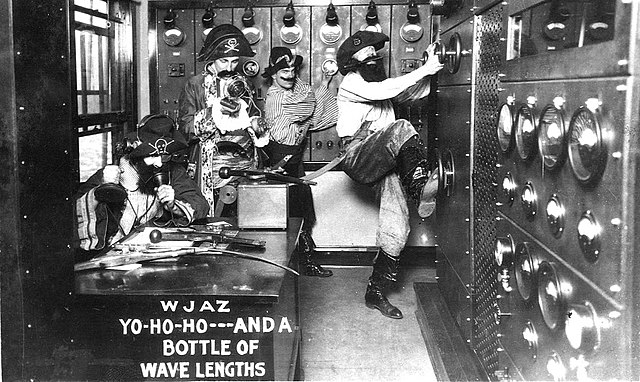The Federal Radio Commission (FRC) was a government agency that regulated United States radio communication from its creation in 1927 until 1934, when it was succeeded by the Federal Communications Commission (FCC). The FRC was established by the Radio Act of 1927, which replaced the Radio Act of 1912 after the earlier law was found to lack sufficient oversight provisions, especially for regulating broadcasting stations. In addition to increased regulatory powers, the FRC introduced the standard that, in order to receive a license, a radio station had to be shown to be "in the public interest, convenience, or necessity".
In 1926, station WJAZ successfully challenged the government's authority to assign transmitting frequencies under the Radio Act of 1912.
From left, Henry Adams Bellows, Eugene O. Sykes, Rear Admiral William H. G. Bullard (chair), John F. Dillon and Orestes H. Caldwell at the first meeting of the Federal Radio Commission in Washington, D.C. (1927)
WJAZ was the call sign used from 1922 to 1931 by a series of four separate, but closely related, broadcasting stations located in Chicago, Illinois and operated by the Chicago Radio Laboratory/Zenith Radio Corporations.
Audiences at the Edgewater Beach Hotel could watch WJAZ studio performances through sound-proofed plate-glass windows (1923)
In 1924-1925 the WJAZ call letters were assigned to a "motor truck" mounted portable transmitter, used to evaluate potential permanent transmitter sites around Chicago.
February 1926 publicity photograph of the WJAZ engineering staff dressed as "wave pirates".




